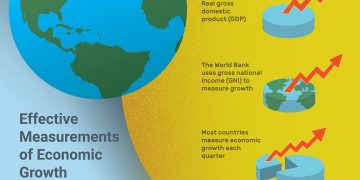Introduction
The U.S. regulatory landscape plays a pivotal role in shaping the investment environment, not just within the U.S. but across the entire North American region. Regulatory policies affect a wide range of economic activities, from corporate governance to environmental standards, labor laws, and financial sector oversight. Changes in these policies can have profound effects on business operations, investor behavior, and overall market sentiment.
Over the past few years, significant shifts in U.S. regulatory policies have sparked debate about their long-term impact on North American investments. From tighter financial regulations to new environmental standards and labor protections, these changes have influenced how investors allocate capital, manage risks, and make decisions about North American markets.
In this article, we will explore how recent and potential regulatory changes in the U.S. are reshaping the investment environment in North America. We will examine the key regulatory shifts, their implications for investors, and the broader economic consequences.
Section 1: Financial Regulation and Its Impact on North American Markets
1.1 Post-2008 Financial Crisis Regulations
In the aftermath of the 2008 financial crisis, the U.S. introduced a series of regulatory reforms designed to prevent a recurrence of the global financial meltdown. Key among these reforms were the Dodd-Frank Wall Street Reform and Consumer Protection Act, which established new rules for financial institutions, including stricter capital requirements, stress testing, and consumer protections.
- Stricter Oversight: The Dodd-Frank Act introduced measures such as the Volcker Rule, which limited banks’ ability to engage in proprietary trading and investment activities that might expose them to excessive risk. These regulations aimed to reduce the risk of systemic collapse while promoting stability in financial markets.
- Impact on Investment Banks: One of the notable impacts of these regulations was a shift in the business models of investment banks. With restrictions on proprietary trading and higher capital requirements, many banks found their profit margins squeezed, leading them to rethink their strategies. This has affected both domestic and international investors who depend on U.S. financial institutions for liquidity and market access.
- Global Implications: While Dodd-Frank was primarily focused on U.S. banks, its effects were felt globally. International investors began to adjust their strategies in response to the new U.S. regulatory environment, as cross-border financial transactions became more complex due to new compliance requirements.
1.2 Regulatory Rollback Under the Trump Administration
The Trump administration enacted several deregulatory measures aimed at reducing the burden on businesses and promoting economic growth. This included efforts to ease financial regulations, such as rolling back parts of the Dodd-Frank Act, particularly the Volcker Rule.
- Eased Regulations: The rollback of Dodd-Frank provisions made it easier for banks to engage in higher-risk activities, as the government sought to foster a more competitive and growth-oriented environment. For instance, a significant change was the relaxation of capital and liquidity requirements for smaller banks, allowing them more leeway to take on additional risks.
- Investor Reaction: While deregulation was generally seen as beneficial for large corporations, particularly banks and financial institutions, many investors were cautious about the potential for increased risk. The removal of certain safeguards left investors wondering about the future stability of the financial system and the potential for market volatility.
- Implications for Market Liquidity: The deregulatory environment was expected to enhance market liquidity and increase the availability of credit, which could benefit businesses, particularly those in capital-intensive industries. For investors, this meant more access to financing, which could spur growth in sectors such as real estate, technology, and manufacturing.
1.3 Biden Administration’s Regulatory Focus
Under President Joe Biden, there has been a shift back toward more robust financial regulations, with a focus on consumer protection, climate change, and the stabilization of the financial system.
- Emphasis on Financial Stability: The Biden administration has emphasized the need for a stronger regulatory framework to ensure long-term stability in financial markets. This includes increasing the oversight of large financial institutions and addressing systemic risks that could lead to another financial crisis.
- Focus on Transparency and Consumer Protection: Another key element of Biden’s financial regulation agenda is improving transparency in financial markets. This is aimed at protecting consumers, ensuring fair practices, and reducing risks related to opaque financial products.
- Impact on Investment Strategy: With the Biden administration’s regulatory stance, investors may expect increased oversight in areas like lending, trading, and corporate governance. Companies may face higher compliance costs, but these regulations are likely to instill greater investor confidence in the long term due to a more secure market environment.
Section 2: Environmental Regulations and Investment Implications
2.1 New Environmental and Climate Policies
The U.S. has recently ramped up its efforts to address climate change, with a focus on transitioning to clean energy and reducing carbon emissions. This regulatory shift has far-reaching implications for North American investment.
- Biden’s Climate Agenda: The Biden administration has committed to achieving net-zero emissions by 2050, and the implementation of policies such as the Clean Energy Standard and tax incentives for renewable energy companies has created opportunities in green technologies and sustainable investments.
- Impact on Traditional Energy Sectors: At the same time, stricter environmental regulations are putting pressure on traditional energy sectors, particularly fossil fuels. As a result, investors are rethinking their exposure to oil, gas, and coal companies, which may face additional costs for carbon emissions and environmental compliance.
- Renewable Energy Growth: The shift toward green energy has led to a surge in investments in solar, wind, electric vehicles (EVs), and other clean technologies. Investors are increasingly targeting companies involved in the development and deployment of clean energy solutions, seeing the sector as a growth area that will benefit from government incentives and the global push for climate action.
2.2 Environmental, Social, and Governance (ESG) Investing
The rise of Environmental, Social, and Governance (ESG) criteria as a major factor in investment decisions reflects growing interest in sustainability and corporate responsibility. Changes in U.S. regulations around ESG reporting are prompting investors to re-evaluate the companies in which they invest.
- Regulatory Push for ESG Disclosure: The U.S. Securities and Exchange Commission (SEC) is considering mandatory ESG disclosures for public companies. Such a move would ensure that investors have access to critical data on corporate sustainability practices, influencing investment strategies.
- Investor Behavior: Institutional investors, such as pension funds and asset managers, are increasingly prioritizing ESG factors in their portfolios. These investments are seen as not only ethically responsible but also financially sound, as companies that perform well in ESG criteria often demonstrate better risk management and long-term growth potential.
- Sector Shifts: ESG-focused investing has led to significant capital flows into industries such as renewable energy, electric vehicles, and sustainable agriculture. In contrast, sectors that are seen as detrimental to the environment, such as coal and other high-emission industries, are experiencing declining investment.

Section 3: Labor and Employment Regulations
3.1 Workers’ Rights and Protections
Changes in U.S. labor laws and employment regulations have been a key focus of the Biden administration. These changes are creating new dynamics in the North American labor market and affecting how businesses approach hiring, labor relations, and compensation.
- Minimum Wage Increases: The Biden administration has proposed increasing the federal minimum wage to $15 per hour, which could have significant implications for businesses and investors. Higher wages could lead to increased consumer spending but could also raise costs for companies, particularly in industries like retail and hospitality.
- Labor Unions and Collective Bargaining: The administration’s push to strengthen labor unions has the potential to alter the balance of power between workers and employers. Increased unionization efforts could lead to higher labor costs for businesses, affecting profitability, especially in sectors that rely heavily on low-wage labor.
3.2 Labor Shortages and Productivity
The COVID-19 pandemic has created significant labor shortages across various industries, particularly in hospitality, transportation, and healthcare. Regulatory policies related to paid leave, workplace safety, and wage increases are influencing labor market conditions.
- Impact on Investment Decisions: Investors are focusing on how businesses manage labor shortages and adjust to new workplace regulations. Companies that invest in automation and technology to mitigate labor shortages are likely to be more attractive to investors, particularly in sectors such as manufacturing and logistics.
Section 4: Conclusion
The regulatory environment in the U.S. has profound implications for North American markets. Recent shifts in financial regulation, environmental policies, and labor protections are shaping investment strategies and altering risk perceptions across sectors. Investors must remain vigilant as these regulatory changes continue to unfold, understanding that policy adjustments can create both opportunities and challenges in different areas of the economy.
For instance, the focus on green energy, ESG investing, and climate change presents substantial growth opportunities in renewable energy and sustainable industries. On the other hand, tighter financial regulations and labor protections may lead to increased costs for businesses in certain sectors, potentially affecting their profitability and market valuations.
In conclusion, regulatory changes in the U.S. not only impact the U.S. market but also reverberate throughout North America, influencing cross-border investments and economic policies. Investors must adapt to these changes by staying informed and aligning their portfolios with emerging trends to navigate the evolving investment landscape.



































